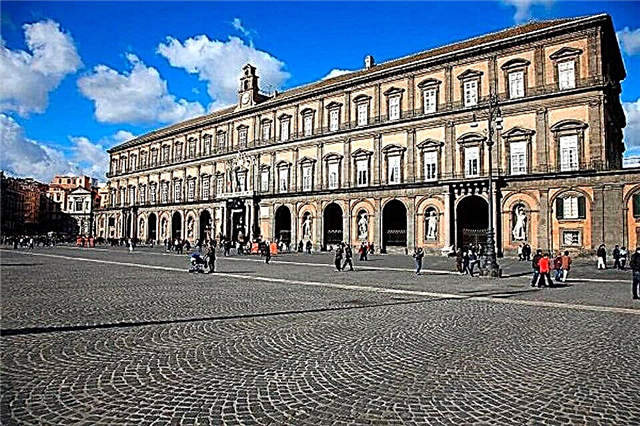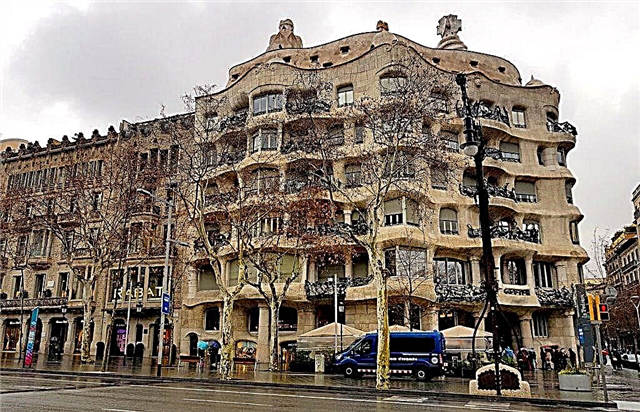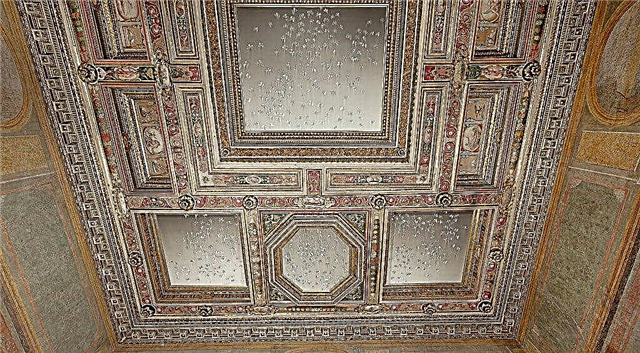The Villa Medici in Rome was named after one of the most famous and noble families in Italy, who for several centuries owned this territory - the palace and the garden.
History

In the 1st century BC, on the Pincho hill, the ancient Roman consul and commander Lucius Lucullus laid out a magnificent garden, the first in ancient Rome. Thousands of plants were planted, many were brought from distant countries, including cultivated cherries, which were not known in Europe before. In the garden, smooth alleys were laid, fountains and comfortable gazebos for relaxation were built. Sculptures of gods, vases and other objects of small architecture were installed everywhere. Consul Decimus Asiatic became the next owner of the garden and mansion. Messalina, the wife of the Emperor Claudius who was ruling at that time, decided by all means to get them into her property.
This woman, known in history for her cruelty and cunning, slandered Asiatic, because of her intrigues he committed suicide. The imperial family became the owner of the entire territory, but this did not bring happiness to Messalina, she was soon executed by soldiers on the orders of Claudius for treason and treason. The palace and the garden had different owners in the following centuries: Emperor Trajan, Acili.
In the IY - beginning of the Y century, it was acquired by the emperor Honorius, he built a new magnificent palace. The Roman Empire fell into decay, as did the palace, which fell into disrepair without proper care. Rare exotic plants disappeared; in the Middle Ages, vineyards were planted on the site of a luxurious garden. This continued until the XYI century, when the dilapidated palace was not acquired by Giovanni Ricci.
He decided to completely rebuild it. An architect from Florence, Nanni di Baccio Bigge, was invited to work. Using some of the old buildings, he erected a new Mannerist (early Baroque) mansion. After the death of Cardinal Ricci, the first representative of the Medici family, Fernando, became the owner of the residence in 1576. He hired an architect from Florence, Bartolomeo Ammannati, to renovate the building that Ricci had built.
The palace was rebuilt, increasing its area at the expense of a gallery and one wing. The garden was also restored - new plants were planted, paths cleared, swimming pools, gazebos and fountains built. Part of the unique collection of Ferdinando Medici, including ancient Roman vases and statues, were set among the evergreen shrubs. In the late 80s of the XYI century, the Medici had to leave for the capital of the Duchy of Tuscany, Florence, in order to rule Tuscany in place of his deceased brother.
In 1737, the ancient family was interrupted, representatives of the Lorraine dynasty began to own the villa. In 1789, the Palace was plundered by order of Leopold II, almost all items of cultural value were transported to Florence (copies are installed in the garden). At the beginning of the 19th century, Napoleon Bonaparte ordered the founding of the French Academy of Arts in the palace. To do this, they made a redevelopment inside the building - they expanded the windows to get more light, and equipped additional rooms for artists and sculptors.
Interesting fact! Galileo Galilei lived in this residence for five months under the supervision of the Inquisition after the end of the trial.
Description

The first owner of the palace from the Medici family was a great connoisseur and lover of art, a passionate collector. He originally planned to set up an open-air museum here and house his famous collection of antique art. Therefore, the palace, built in the Renaissance style, was given a romantic look - statues of ancient heroes were installed in the niches of the building, the walls were decorated with a number of bas-reliefs depicting scenes from mythology and the life of legionnaires.
In front of the main entrance, you can see a fountain with the figure of a god, the patron saint of trade, Mercury, the son of Jupiter; turrets with open terraces are erected on the opposite wings of the building. The stairs leading to the loggia are guarded by figures of lions, made of light marble, they hold cannonballs in their paws (a hint of the Medici coat of arms).

Passing through the arch of the entrance you find yourself in the vestibule, the walls of which are covered with allegorical frescoes - illustrations of Aesop's works and pictures of nature. Most of them were painted by the painter Jacop Zucchi. Recently, during the restoration, the ceiling was cleaned from a layer of old plaster and the finest painting appeared - a pergola entwined with greenery (canopy). Within the walls of the Palace there is a valuable collection of works of fine art.
Old furniture, tapestries, engravings, sculptures, musical instruments, documents have been preserved. Some of the exhibits still belonged to Ferdinand Medici. The gardens, spread over 7 hectares, have preserved the appearance of the 11th century. They were conceived as botanical gardens, which had appeared by that time in European countries. For this, by order of the owner, rare tree species were planted; by the 19th century, many pines were planted here.
Pools and fountains were built, and Camillo Agrippo, a skilled engineer, equipped them with a complex hydraulic system for their work. There are 170 statues in total. Among them, the figures of the goddess Niobe and Roma are the most revered among the people. The dilapidated Temple of Fortune, which stood in the south of the garden, was covered and a platform was set up for exploring the magnificent surroundings. In recent decades, Villa Medici has been restored, architects carefully restore the building itself, as well as lawns and flower beds in the garden, according to old drawings.
Secret
One of the secrets still not revealed to the general public is the secrets of the basements of the Palace. At the height of World War II, the Bank of Italy rented part of the basement to preserve its archives. When equipping the storage space, one small room (2 mx 3 m and 2.5 m high) deep in the underground was walled up and has not been opened to this day. What's in there? There are disputes between archaeologists and employees of the Academy. Academics argue that this is just a wall that supports the foundation, and it cannot be destroyed, because the vault will not withstand.
For this reason, archaeologists are not allowed to explore the secret room and what it hides - treasures, important documents or books confiscated from Jewish citizens during the war. Indeed, the unique 7000-volume Synagogue Library has never been found. Maybe there are the values of the Nazis, because the Bank of Rome worked closely with them during the war. Many people ask the question - why until now has no one claimed the contents of the room?
Where is it and how to get there
The palace is located in Rome, on the Pincio hill near the Plaza de España - Viale Trinita dei Monti, 1.
You can get to the villa by public transport:
- metro (Line A) to the Spagna stop, then walk to Trinita dei Monti avenue;
- by bus number 117 to the Spagna stop.
To see the sights with a guided tour, tickets must be purchased in advance.
You can book an apartment for the night in 4 months.
Working hours: from Tuesday to Sunday - from 09:30 to 17:30;
Weekends are Mondays, May 1st and December 25th.
Ticket price:
- for adults - 12 euros, for children under 10 years old admission is free;
- ticket price for people over 60 years old and students - 6 euros.
The beautiful greenery of the garden, exquisite architecture and art objects of the Villa Medici in Rome will bring true delight and will be remembered for many years.










